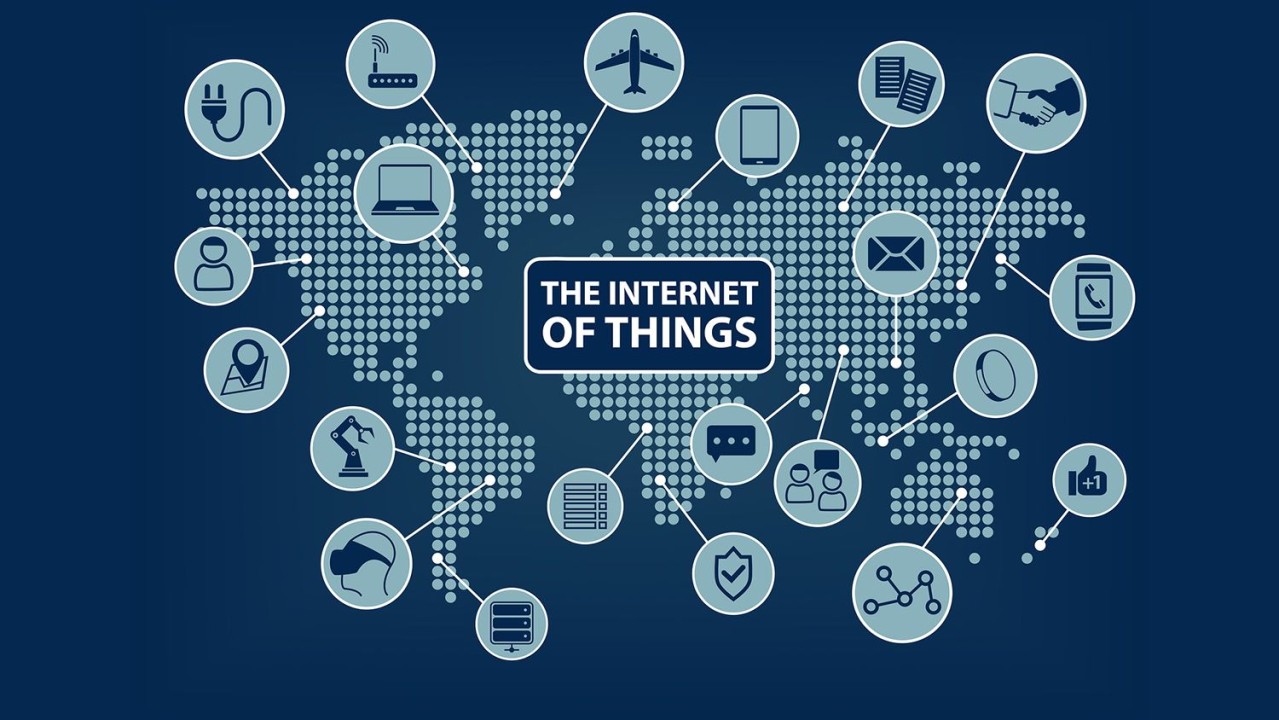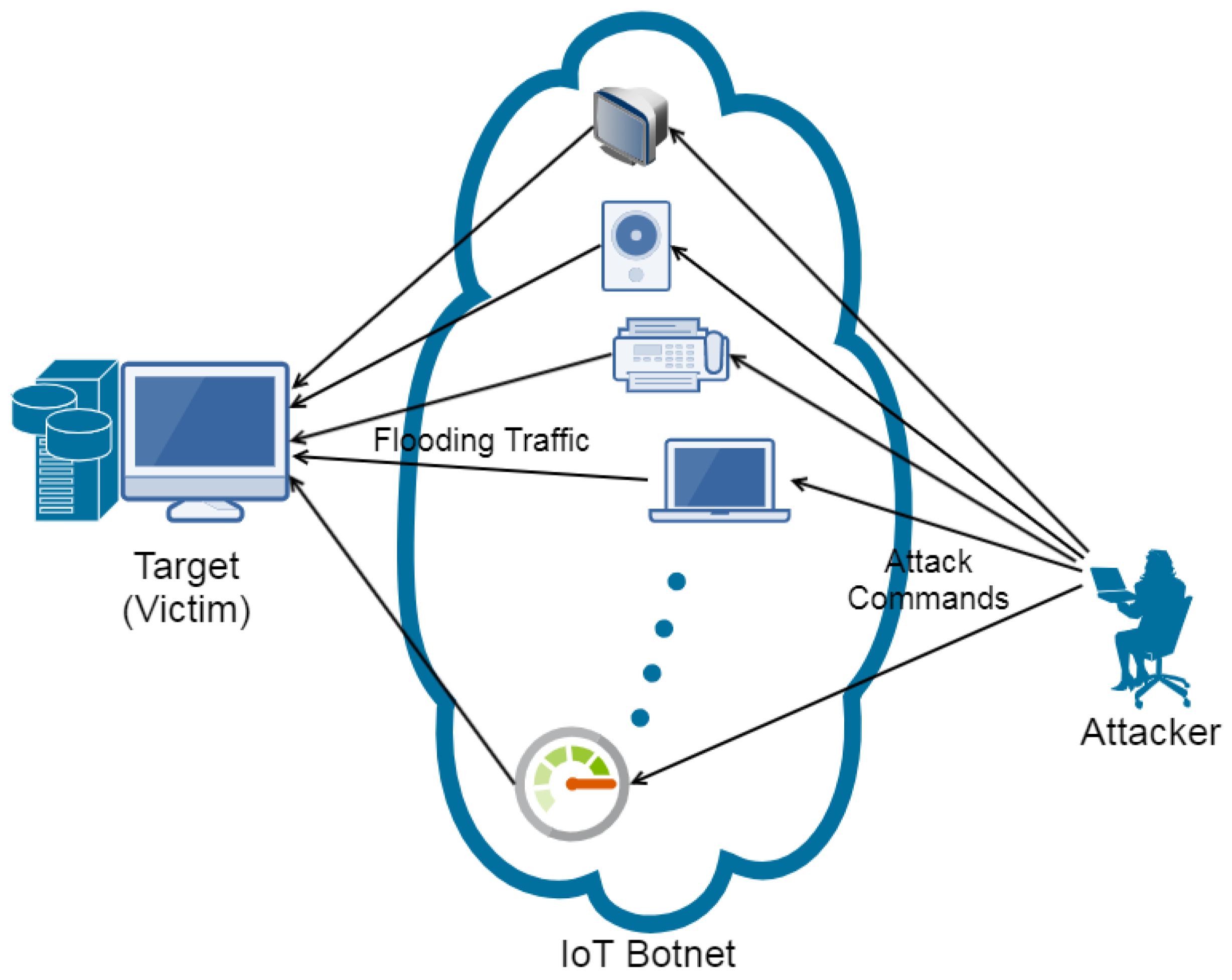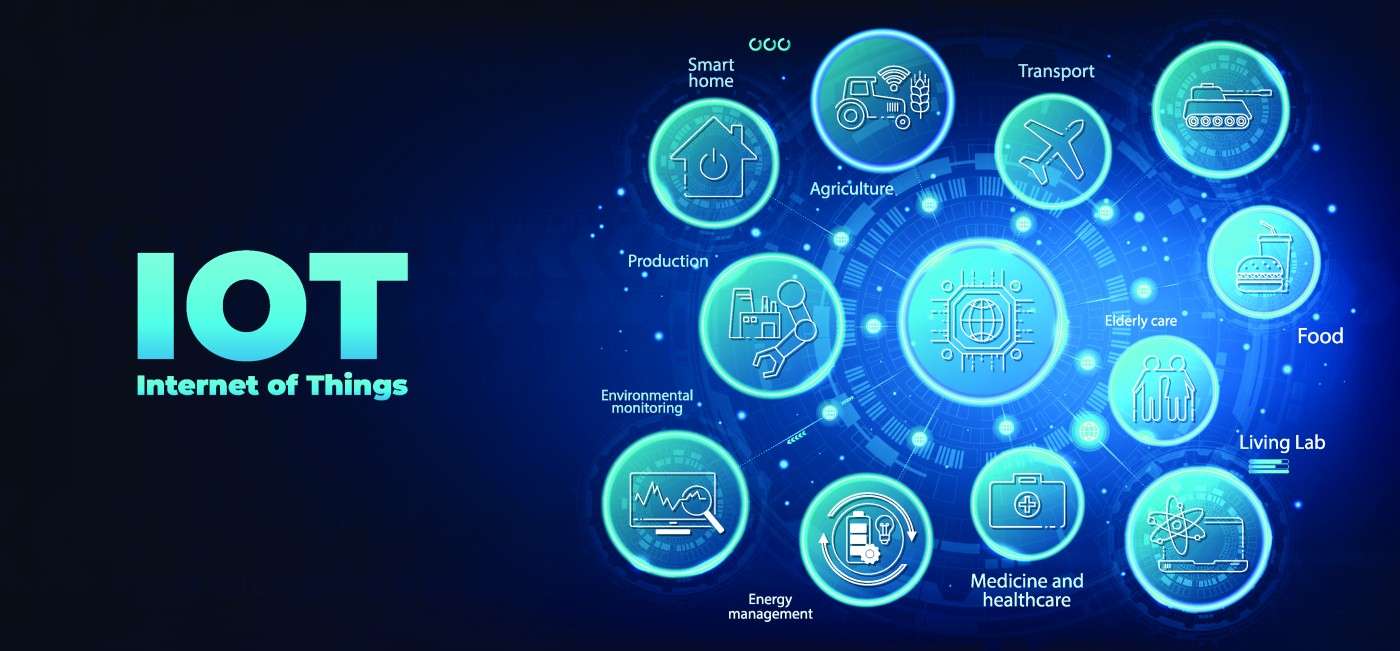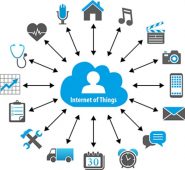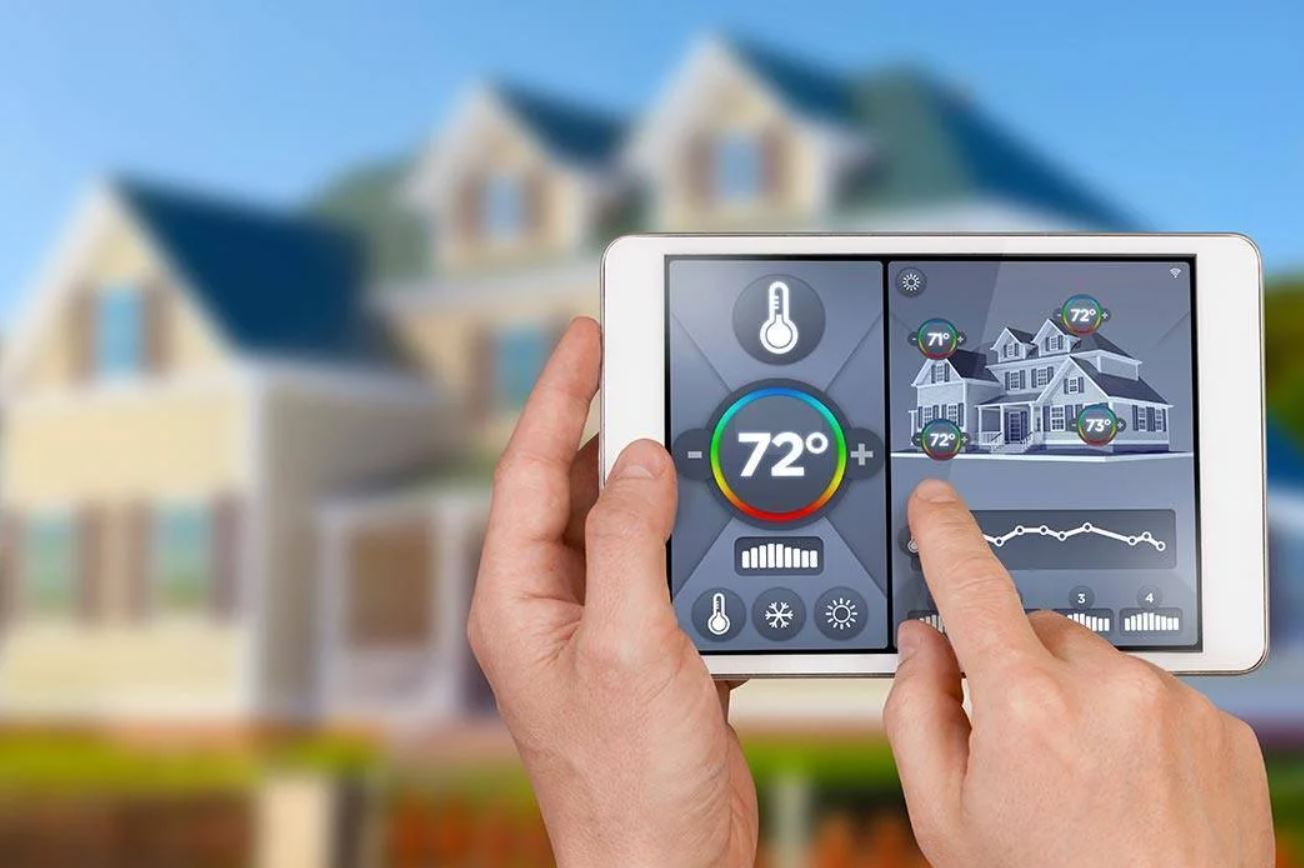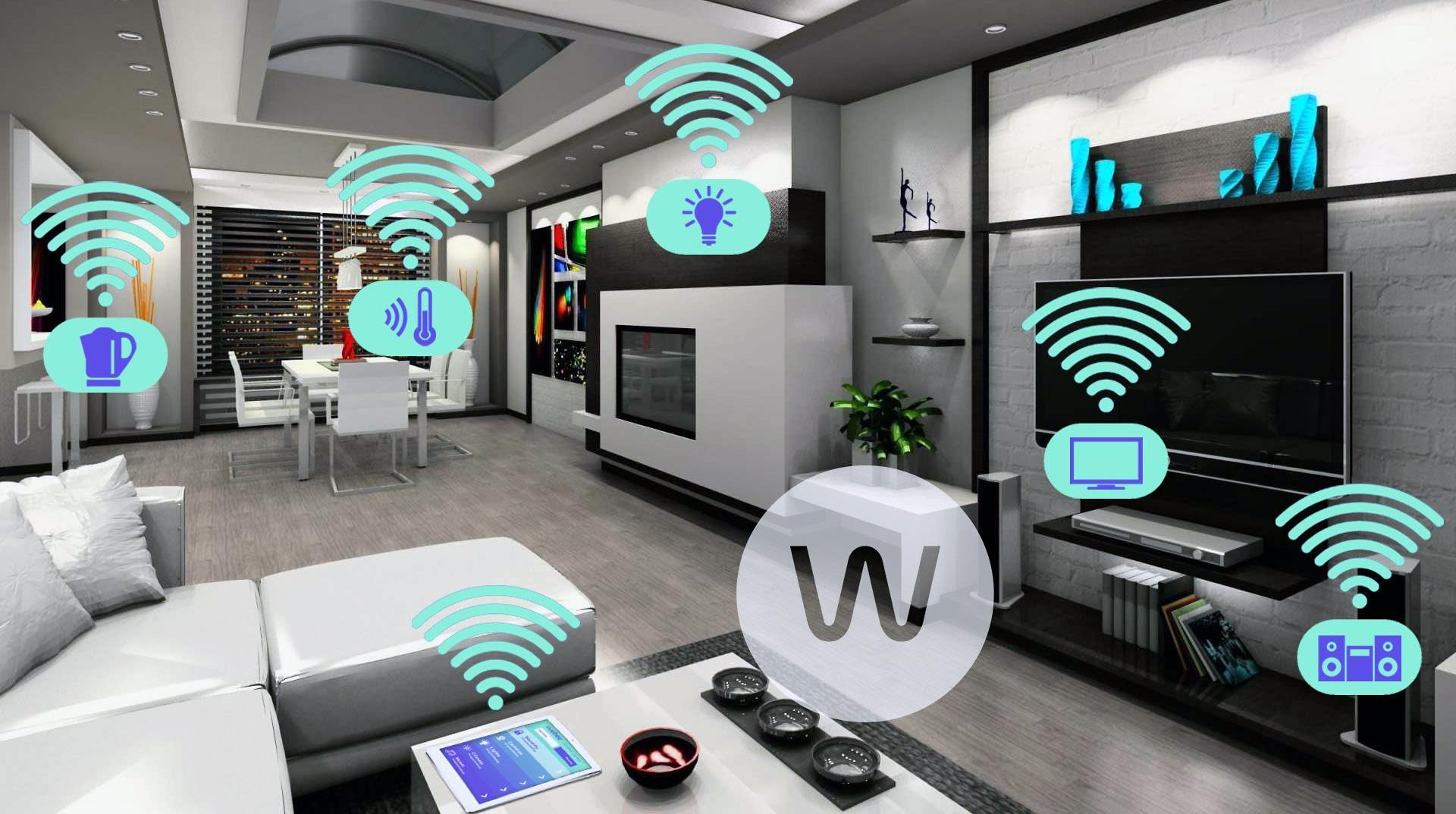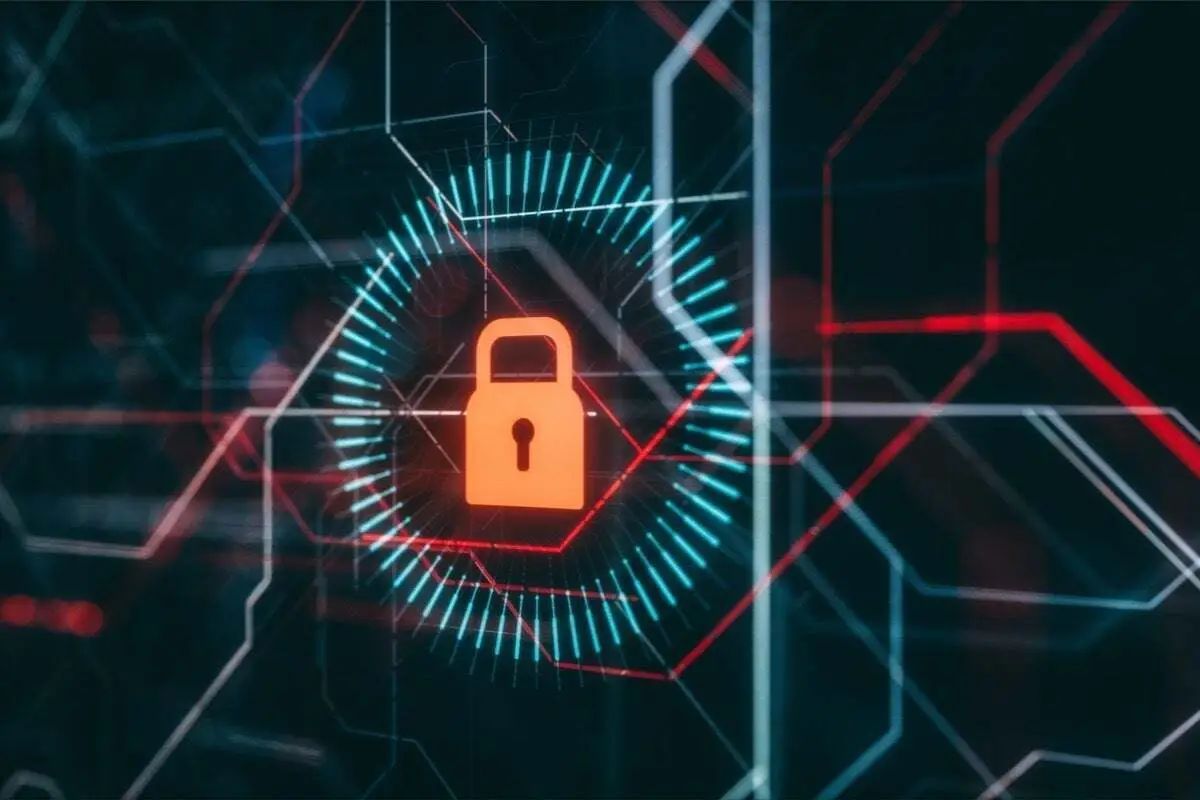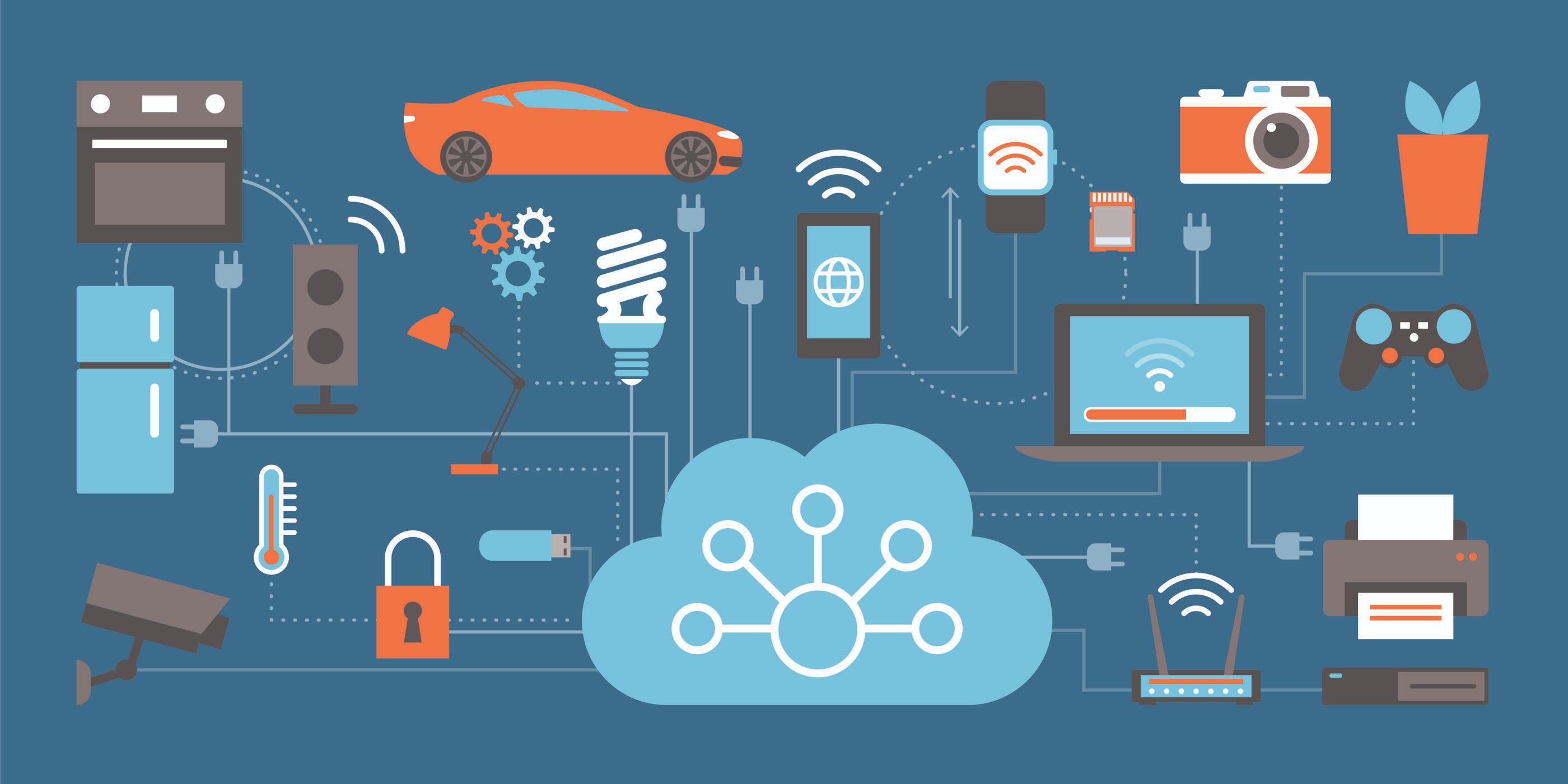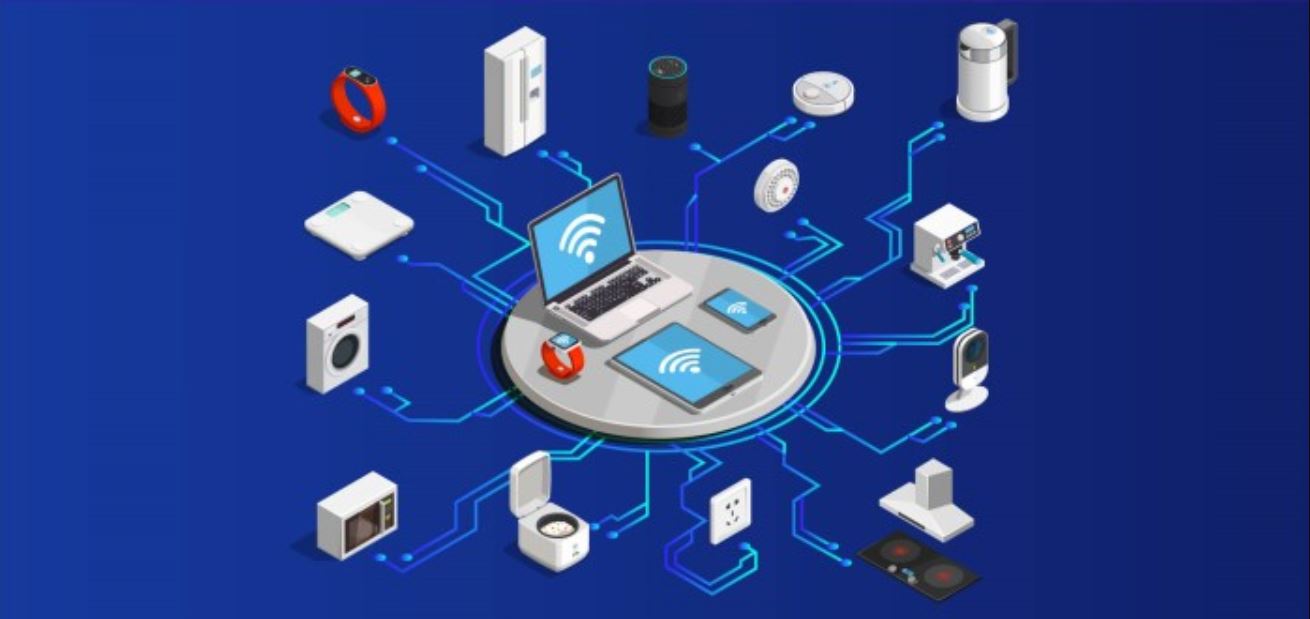Introduction
The Internet of Things (IoT) has revolutionized the way we live and work, connecting various devices and enabling them to communicate and share data. IoT systems consist of several interconnected parts that work together seamlessly to create a powerful and innovative network. Understanding the main components of IoT systems is crucial for businesses and individuals looking to leverage this technology effectively.
IoT systems involve a wide range of devices and sensors that collect and transmit data. These devices can range from smart appliances and wearable devices to industrial machinery and environmental sensors. By collecting data from the physical world, these devices provide valuable insights that can be used to optimize processes, make informed decisions, and improve overall efficiency.
Connectivity is another essential component of IoT systems. Devices need to communicate and exchange data with each other and the central hub or cloud infrastructure. This is typically done using various wireless protocols such as Wi-Fi, Bluetooth, or cellular networks. The connectivity aspect ensures that devices can operate seamlessly within the IoT ecosystem.
The cloud infrastructure plays a pivotal role in IoT systems. It serves as a central hub where data from devices is collected, stored, and processed. The cloud allows for scalability, as it can handle large amounts of data generated by numerous devices. Moreover, it provides a platform for data analytics and processing, enabling businesses to derive valuable insights from the collected data.
Data analytics and processing are critical components of IoT systems, as they allow for advanced data analysis, pattern recognition, and predictive modeling. By analyzing the vast amounts of data generated by IoT devices, businesses can gain valuable insights to enhance decision-making processes, improve operational efficiency, and identify new business opportunities.
The user interface is an integral part of any IoT system. It enables users to interact with the IoT devices and applications easily. This can be through mobile apps, web-based dashboards, or voice assistants. A well-designed user interface enhances the usability and accessibility of the IoT system, making it more intuitive and user-friendly.
Security and privacy are paramount when it comes to IoT systems. With the proliferation of interconnected devices, ensuring data security and protecting user privacy is crucial. Robust security measures, such as encryption, authentication, and access control, need to be implemented to safeguard the IoT ecosystem from potential threats and breaches.
Lastly, IoT systems are built for specific applications and services. Whether it’s in healthcare, manufacturing, agriculture, or smart homes, IoT is being utilized across various industries to solve specific problems and provide innovative solutions. These applications and services leverage the interconnected devices and the data they collect to deliver tangible benefits, efficiency, and improved quality of life for individuals and organizations.
Devices and Sensors
At the core of any IoT system are the devices and sensors that collect and transmit data. These devices come in various forms and can range from small, low-power sensors to complex machinery and appliances.
The devices in an IoT system are responsible for capturing real-world data. This can include temperature, motion, humidity, light levels, and many other parameters depending on the specific application. Sensors embedded within the devices enable them to gather this data and make it available for further processing.
The diversity of devices in IoT systems is vast. From environmental sensors that measure air quality to wearable devices that track our health and fitness, there are numerous applications that rely on different types of devices. Industrial IoT (IIoT) systems, for example, often involve large-scale machinery and equipment equipped with sensors to monitor performance, predict maintenance needs, and optimize operations.
Wireless connectivity is a common feature of IoT devices, allowing them to transmit data to other devices or a centralized hub. Wireless protocols such as Wi-Fi, Bluetooth, and Zigbee enable seamless communication between devices, even when they are in different geographical locations.
Efficient power management is also a crucial consideration when it comes to IoT devices. Many devices are battery-powered and need to minimize energy consumption to ensure long operating times. Low-power design techniques and energy harvesting technologies enable devices to function for extended periods without requiring frequent battery replacements.
In addition to the physical devices, IoT systems often involve gateways or edge devices that act as intermediaries between the connected devices and the cloud infrastructure. These gateways perform tasks like data filtering, local processing, and encryption before transmitting the relevant data to the cloud.
The ongoing advancement of device miniaturization, improved battery life, and increased computing power has led to the proliferation of IoT devices in various industries and applications. From smart homes and cities to industrial automation and healthcare monitoring, devices and sensors are the foundation of IoT systems, enabling them to collect valuable data and drive innovation.
Connectivity
Connectivity is a fundamental aspect of IoT systems, enabling devices to communicate and exchange data with each other and the central hub or cloud infrastructure. It allows for the seamless integration and coordination of multiple devices within the IoT ecosystem.
Wireless connectivity technologies play a key role in enabling connectivity between IoT devices. Wi-Fi is a commonly used wireless protocol in many IoT applications as it provides a reliable, high-speed connection over a short range. Bluetooth is another popular choice, especially for low-power devices that require short-range communication, such as wearable devices and smart home sensors.
In scenarios where long-range connectivity is required, cellular networks, such as 3G, 4G, and now 5G, provide wide coverage and reliable connectivity. Cellular IoT connectivity allows devices to be deployed in remote locations and still have the ability to connect to the internet and transmit data.
Another connectivity option is the Zigbee protocol, which is specifically designed for low-power, low-data-rate IoT applications. Zigbee enables devices to form mesh networks, allowing them to relay data and extend the range of the network.
Furthermore, the emergence of technologies like Narrowband IoT (NB-IoT) and Long Range Wide Area Network (LoRaWAN) provides connectivity solutions specifically tailored for IoT devices that require long-range connectivity, low power consumption, and low data rates. These technologies are well-suited for applications such as smart metering, asset tracking, and agricultural monitoring.
In addition to wireless connectivity, IoT systems can also make use of wired connections. Ethernet and Power over Ethernet (PoE) are commonly used in industrial settings where a stable and high-bandwidth connection is required. Wired connections offer higher data transfer rates and can provide a more reliable connection compared to wireless options.
Furthermore, advancements in network protocols like IPv6 have enabled the seamless integration of a large number of IoT devices into existing network infrastructures. With the massive scale of IoT deployments, IPv6 provides a virtually unlimited number of IP addresses, ensuring that each IoT device can be uniquely identified and communicated with.
In summary, connectivity is a vital component of IoT systems, allowing devices to communicate, share data, and collaborate within the IoT ecosystem. With a variety of wireless and wired connectivity options available, IoT systems can be tailored to specific requirements, providing seamless connectivity for a wide range of applications and use cases.
Cloud Infrastructure
Cloud infrastructure is a crucial component of IoT systems, serving as a central hub where data from connected devices is collected, stored, and processed. It provides a scalable and flexible platform for managing and analyzing the massive amounts of data generated by IoT devices.
The cloud infrastructure allows for centralized storage of data, eliminating the need for local storage on individual devices. This centralized approach enables data to be easily accessible and available for processing and analysis from anywhere and at any time.
One of the key advantages of using cloud infrastructure in IoT systems is scalability. As the number of connected devices and the volume of generated data increases, cloud services can effortlessly handle the growing demands. This scalability ensures that IoT systems can accommodate large deployments with ease.
The cloud also provides a platform for data analytics and processing. Advanced analytics tools can be leveraged to gain valuable insights from the collected data. This includes tasks such as real-time analysis, predictive modeling, and anomaly detection, enabling businesses to make data-driven decisions and optimize their operations.
Additionally, cloud infrastructure offers a high level of reliability and data redundancy. Cloud providers deploy multiple data centers and use various replication techniques to ensure that data is always available and protected against hardware failures or natural disasters. This level of redundancy ensures continuous operation of IoT systems, even in the face of unforeseen circumstances.
Furthermore, cloud infrastructure enables collaboration and integration between different IoT applications and services. By securely exposing APIs, IoT developers can easily integrate their applications with cloud services, enabling seamless data exchange and leveraging the capabilities of other services, such as machine learning or storage.
Data security and privacy are critical concerns in IoT systems, and cloud infrastructure plays a vital role in ensuring the protection of sensitive information. Cloud providers have robust security measures in place, including encryption, access control, and authentication mechanisms, to safeguard data from unauthorized access and breaches.
Overall, the cloud infrastructure is a central component of IoT systems, providing a scalable, reliable, and secure platform for collecting, storing, and analyzing data from connected devices. Its flexibility and integration capabilities make it an essential component for businesses looking to leverage the full potential of IoT technology.
Data Analytics and Processing
Data analytics and processing are crucial components of IoT systems that enable businesses to derive valuable insights from the vast amounts of data generated by connected devices. By analyzing this data, businesses can make informed decisions, optimize processes, and discover new opportunities for growth.
One of the primary goals of data analytics in IoT systems is to extract meaningful information and patterns from raw data. This involves the use of advanced analytical techniques and algorithms to uncover hidden insights and correlations. Various techniques such as statistical analysis, machine learning, and artificial intelligence (AI) are employed to process and analyze the data.
Real-time data analytics is an essential aspect of many IoT applications. By processing data in real-time, businesses can take immediate action or provide timely alerts based on the analyzed information. Real-time analytics enables proactive decision-making and enhances operational efficiency.
Data visualization is another critical aspect of data analytics in IoT systems. Visual representations of data in the form of charts, graphs, and dashboards make it easier for users to understand complex patterns and trends. Visualizations facilitate data-driven decision-making and improve the overall user experience.
Predictive analytics is a powerful capability offered by data processing in IoT systems. By analyzing historical data and employing machine learning algorithms, predictive models can be built to forecast future trends, anticipate maintenance needs, and optimize resource allocation. Predictive analytics empowers businesses to proactively address problems and improve efficiency.
Anomaly detection is another important aspect of data analytics in IoT systems. By detecting unusual patterns or deviations from expected behavior, businesses can identify potential issues or anomalies in real-time. Anomaly detection helps in early warnings, preventing failures, and ensuring smooth operation of IoT systems.
Data privacy and security are crucial considerations in data analytics and processing in IoT systems. It is vital to implement strong security measures at every stage of data processing, including data transmission, storage, and analysis. Encryption, access control, and secure protocols help protect sensitive information and maintain the integrity of the IoT system.
Edge computing is an emerging trend in data processing for IoT systems. Edge devices, located closer to the data source, perform data processing and analytics locally, reducing latency and conserving network resources. Edge computing enables real-time decision-making and can be particularly useful in applications requiring immediate response times, such as autonomous vehicles and smart grids.
Overall, data analytics and processing play a crucial role in extracting valuable insights and driving actionable outcomes from the vast amounts of data generated by IoT systems. By leveraging advanced analytical techniques, businesses can optimize processes, improve efficiency, and gain a competitive edge in the rapidly evolving IoT landscape.
User Interface
The user interface (UI) is a critical component of IoT systems as it allows users to interact with the connected devices and applications easily. A well-designed UI enhances usability, accessibility, and overall user experience, making the IoT system intuitive and user-friendly.
One of the primary goals of the UI in IoT systems is to provide a seamless and intuitive way for users to control and monitor the connected devices. This can involve mobile apps, web-based dashboards, voice assistants, or even augmented reality interfaces.
The UI should be designed with simplicity in mind, allowing users to perform tasks and access information effortlessly. Clear and intuitive navigation, along with logical organization of features and functionalities, enhances the usability of the IoT system.
Visual elements and aesthetics play a crucial role in the UI design. The use of icons, colors, and visual cues helps users quickly understand the status, alerts, and actions available within the IoT system. Clear and informative visual representations of data facilitate data comprehension and decision-making.
Responsive design is vital for IoT systems that span across multiple devices and screen sizes. The UI should adapt and optimize its layout and functionalities based on the device used by the user, ensuring a consistent experience across different platforms.
Voice interfaces, such as voice assistants, are becoming increasingly prevalent in IoT systems. Natural language processing (NLP) and voice recognition technologies enable users to control devices, ask questions, and receive responses through spoken commands. Voice interfaces add convenience and accessibility to IoT systems, particularly in situations where physical interaction may not be possible, like when driving or during hands-on tasks.
Accessibility is an essential consideration in UI design for IoT systems. The UI should be designed to accommodate users with different abilities, ensuring that everyone can access and interact with the system effectively. This can involve features like text-to-speech capabilities, high contrast options, and support for assistive technologies.
User feedback and iterative design processes are crucial to enhancing the UI of an IoT system. Gathering user feedback through usability testing, surveys, or analytics helps identify areas for improvement and optimize the overall user experience. Regular updates and refinements to the UI based on user feedback ensure continuous improvement of the IoT system.
In summary, the user interface is a vital component of IoT systems, enabling users to interact with connected devices and applications easily. Through intuitive design, responsive layouts, accessibility features, and the integration of voice interfaces, the UI enhances usability, satisfaction, and overall user experience in the IoT ecosystem.
Security and Privacy
Security and privacy are paramount considerations in IoT systems due to the vast amount of sensitive data being transmitted and stored. Protecting the confidentiality, integrity, and availability of data is essential to ensure trust and prevent unauthorized access or malicious attacks.
One of the key aspects of security in IoT systems is authentication and access control. Rigorous authentication mechanisms, such as strong passwords, multi-factor authentication, or biometric recognition, ensure that only authorized individuals or devices can access the system. Access control policies restrict access to specific resources or functionalities based on user roles and permissions.
Encryption is another crucial security measure in IoT systems. Data encryption techniques are used to protect data during transmission and storage, rendering it unreadable to unauthorized parties. Encryption provides a safeguard against eavesdropping, data tampering, and interception of sensitive information.
Secure communication protocols, such as Transport Layer Security (TLS), are employed to establish secure connections between IoT devices, gateways, and the cloud infrastructure. These protocols ensure that data transmitted between devices and the cloud is encrypted and cannot be intercepted or manipulated during transmission.
Continuous monitoring and threat detection are critical components of IoT system security. Intrusion detection systems, anomaly detection techniques, and real-time monitoring help identify and respond to potential security breaches promptly. Automated alerts and security notifications enable timely actions to mitigate risks and prevent further damage.
Secure software development practices are essential in IoT systems to minimize vulnerabilities and protect against potential exploits. Regular updates and patch management should be implemented to address any security flaws or weaknesses discovered in the system. Additionally, adhering to secure coding standards, performing code audits, and conducting regular security assessments are vital to maintaining a robust and secure IoT system.
Data privacy is closely tied to security in IoT systems. Organizations must adhere to data privacy regulations and guidelines to protect user’s personal information and prevent unauthorized use or disclosure. Anonymization techniques and data minimization practices should be employed to reduce the risk of data exposure and unauthorized access.
Furthermore, user consent and data transparency play a critical role in maintaining privacy in IoT systems. Clear and accessible privacy policies should be provided to users, outlining how their data is collected, stored, and used. User-friendly interfaces that allow users to configure privacy settings and control their data sharing preferences enhance transparency and give users more control over their personal information.
In summary, security and privacy are paramount in IoT systems. By implementing robust authentication, encryption, access control, and monitoring measures, organizations can protect the integrity and confidentiality of data. Adhering to privacy regulations, providing transparent data practices, and allowing users control over their personal information enhance privacy in IoT systems, fostering trust and confidence among users.
Applications and Services
The true value of IoT systems lies in their ability to deliver innovative applications and services that solve specific problems and bring tangible benefits to individuals and organizations. IoT technologies have been harnessed across various industries, revolutionizing processes, improving efficiency, and enhancing the quality of life.
In the healthcare sector, IoT applications have transformed patient monitoring, remote healthcare, and telehealth services. Wearable devices equipped with sensors can monitor vital signs, track medication adherence, and provide real-time health data to healthcare professionals. IoT-enabled telehealth platforms allow for remote consultations, reducing the need for in-person visits and improving accessibility to healthcare services.
In the manufacturing industry, IoT systems have enabled the implementation of smart factories and industrial automation. IoT sensors and devices embedded in machinery can monitor performance, detect faults, and predict maintenance needs, reducing downtime and optimizing production processes. Machine-to-machine communication and real-time data analysis have enabled efficient inventory management and streamlined supply chain operations.
Agriculture has also benefited from IoT applications, leading to the concept of precision farming. IoT devices, such as soil moisture sensors, weather stations, and automated irrigation systems, enable farmers to monitor and optimize crop conditions, saving water and improving crop yields. IoT technologies have revolutionized livestock management through techniques like smart collars and ear tags, enabling real-time monitoring of animal health and behavior.
Smart homes and cities are becoming increasingly prevalent due to IoT technologies. IoT-enabled smart home devices, such as thermostats, lighting systems, and security cameras, can be controlled remotely and optimized for energy efficiency and security. In smart cities, IoT systems are utilized for traffic management, waste management, and improved energy consumption, enhancing the overall quality of urban life.
Transportation and logistics have seen notable advancements through the application of IoT systems. Fleet management solutions that leverage IoT technology enable real-time vehicle tracking, monitoring of fuel consumption, and optimization of logistics routes, enhancing efficiency and reducing costs. IoT-enabled asset tracking systems provide real-time visibility and help prevent loss or theft of valuable assets during transportation.
Consumer IoT devices, such as smart speakers, wearable devices, and connected appliances, have become increasingly prevalent in our daily lives. These devices enhance convenience and offer a seamless integration between digital and physical aspects of our routines. Voice assistants, powered by IoT technology, allow users to control devices and access information through voice commands.
These are just a few examples of the vast array of applications and services powered by IoT systems. The versatility and scalability of IoT technology enable its deployment in numerous domains, providing innovative solutions and opportunities for businesses and individuals alike.
Conclusion
The Internet of Things (IoT) is revolutionizing the way we live and work, connecting devices and enabling them to communicate and share data. In this article, we explored the main components of IoT systems, including devices and sensors, connectivity, cloud infrastructure, data analytics and processing, user interface, security and privacy, and applications and services.
Devices and sensors lay the foundation of IoT systems, collecting real-world data and enabling insights and optimizations. Connectivity ensures seamless communication between devices and the central hub or cloud infrastructure, utilizing various wireless and wired protocols. Cloud infrastructure serves as a central hub for data storage, processing, and analysis, offering scalability and flexibility.
Data analytics and processing enable businesses to derive valuable insights from the vast amounts of data generated by IoT devices, empowering data-driven decision-making and predictive models. The user interface is crucial for easy interaction with IoT devices and applications, ensuring usability, aesthetics, and accessibility.
Security and privacy are vital considerations in IoT systems to protect data confidentiality, integrity, and availability. Robust authentication, encryption, access control, and monitoring mechanisms are employed to mitigate security risks. User consent and transparent data practices are essential for maintaining privacy and giving users control over their personal information.
Lastly, IoT systems deliver innovative applications and services across various industries, improving healthcare, manufacturing, agriculture, homes, cities, transportation, and consumer electronics. These applications leverage the interconnected devices and data generated by IoT systems, bringing tangible benefits and transforming processes.
In conclusion, the components of IoT systems work together to create a powerful and innovative network that has the potential to revolutionize industries and improve our quality of life. As IoT technology continues to advance, it will open up new opportunities and possibilities, driving further innovation and transforming the way we interact with our world.







